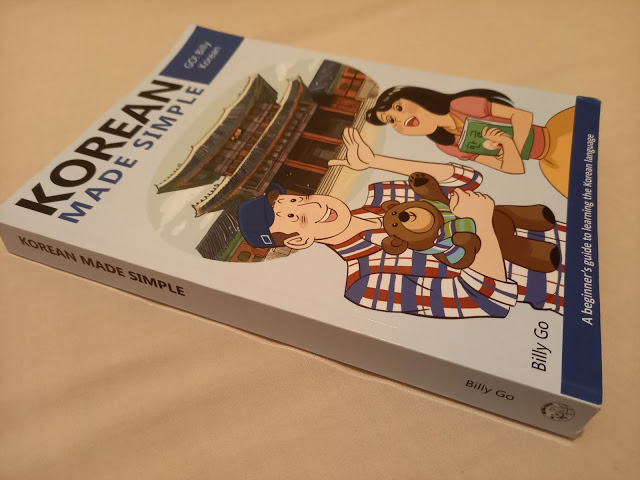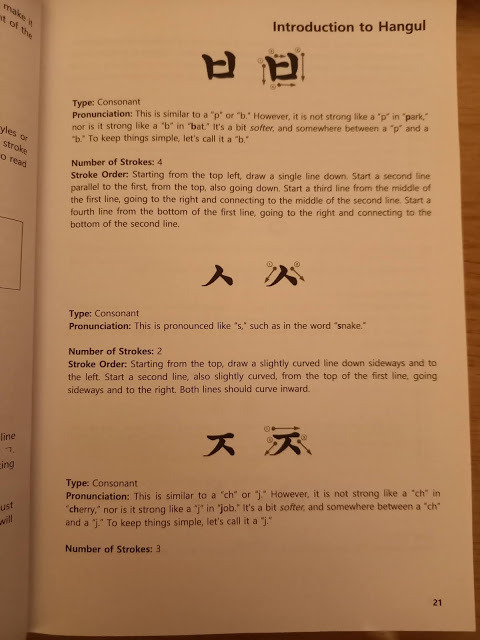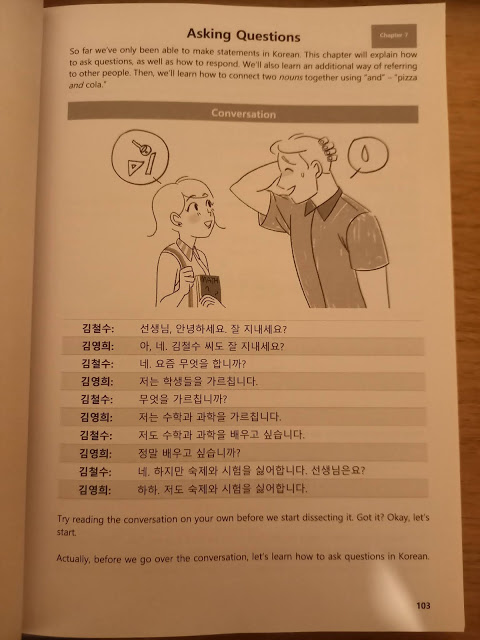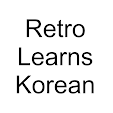Just in case you don't know by now. Billy Go is an American, Korean teacher who makes videos explaining grammar and sometimes various aspects of the Korean language through slightly comedic videos. For the past year he has regularly been streaming on Sunday's on various topics voted for by subscribers.
According to his website, he began learning in 2005 and has lived in Korea for multiple years and now visits there for a few months every year. He started his YouTube channel in 2012 and released Korean Made Simple 1 in 2014. It was then followed up with Korean Made Simple 2 in the same year and Korean Made Simple 3 a few years later in 2016.
He recently started a Beginner video course that is completely free on YouTube that is set to span 100 videos. Although personally I would recommend the books due to it being quicker to go through overall or possibly playing the videos at 2x speed.
I personally used all 3 Korean Made Simple books when I was starting out, so I will also share a few tips on how to use the books throughout the review. Hopefully this review can help you make an informed decision on whether or not you wish to purchase the books.
 |
| Korean Made Simple grammar book front cover |
Content overview
After a brief introduction, we are greeted with instruction on how to read the Korean alphabet, Hangeul. Here Billy explains the sounds and shows the stroke order, even explaining why stroke order is important, although it is probably not evident at this point you but will realise the use later on in regards to reading handwriting and producing your own scribbles.
There are many examples of words to help learn the characters through real life examples and even small vocabulary sections to help you learn some words before you progress onto the main grammar content. These explanations are definitely more than adequate, I definitely believe it's one of the better resources for learning Hangeul. Pair this with videos such as this from Conversational Korean and you have the sounds paired with the explanations from Billy.
 |
| Example of how Hangeul is taught in the book |
The main grammar content starts with the very basics. Laid out with a conversation to introduce the various grammar points. While it's a good way of having a layout for each chapter I found myself often just skipping over the actual conversation and reading through the chapter to get the explanations that I need.
One of the best things that the book provides is having multiple very short sentences that allow you to understand the grammar. Many grammar books often make the mistake of trying to add too many new words whilst trying to explain the grammar at the same time. This makes it much easier to pick up the grammar usage.
 |
| Conversations at the beginning of each chapter |
The grammar points are very well explained and sometimes categorised into topics that will carry 2 similar grammar points and then the differences are compared and differentiated. While reading you will also notice various culture notes dotted throughout the chapters. These are very good and the only downside is that there isn't more of them.
I recommend while using this book to focus on the example sentences. When I initially used it I would find myself just reading the explanations and avoiding the examples but they will really help you in the long run to acquire the grammar rather than just learn it. I also recommend to avoid the question sections at the end of the chapters and focus more on the vocabulary provided.
 |
| Many example sentences for you to understand the grammar |
I can say from experience that all the vocabulary in this book is definitely worth learning although, bear in mind you won't learn everything first time so don't beat yourself up if you can't get a word to stick. Overall the 1,000 words in the book is almost nothing in terms of language proficiency but it's definitely a huge step to understanding the language.
The appendix of the book covers typing in Korean, syllables and also lists all the conversations but with a different politeness level. It may be a good idea to read through them at this point so you can see the differences. If you would like to learn how to type in Korean please check my article on the topic.
 |
| Appendix lists sound change rules with examples |
Conclusion
By the time you have finished the book you will be able to understand various topics from basic greetings, conjugation of verbs, how to use adjectives and how to tell the time. While these are huge steps in understanding it is still just a drop in the Korean language ocean. Please bear in mind that you may still feel and very much will feel like you're still at a very low level.
This is a great book for those that are starting out and it will give you a great foundation for learning the Korean language but on it's own it will not take you that far. I highly recommend continuing with Korean Made Simple 2 after this, as it will give you more of a base to build your Korean knowledge on. The book is available to Purchase on Amazon or via Go Billy's website. For the full list of content visit here.
While using this book I highly recommend getting a lot of input via watching and listening. Once you are more comfortable with the language you can start to add reading. This book and other grammar books will boost your understanding of what you are hearing and seeing the stuff learnt being used in TV shows and reading will help reinforce them. I also recommend using the 500 words Anki deck along side this book.
 |
| Korean Made Simple back cover |
For related posts please check out these pages:
- TTMIK Grammar points list
- Hanja(word builder) lessons list
- Anki Decks for Korean Learners
- Talk To Me In Korean Book Review and Thoughts on the Curriculum
- The Role of Grammar Study in Language Learning
- How to Spend as Much of Your Day as Possible Learning Korean
- Smartphone Apps For Learning Korean
- Talk to Me in Korean Advanced Idiomatic Expressions Reference List
- Korean Grammar in Use Advanced - Grammar Points Ranked
- Korean Dictionary Symbols Explained

hi. can u recommend the specific order to use these resources? i wanna use both this series and ttmik curriculum.
ReplyDeletethank u sm
It doesn't really matter. Just use whichever you want first the outcome will be the same, you'll be an extreme beginner with more than 90% of the language left to learn. Trying to optimise isn't going to save you more than an hour of your time.
Deletethank u sm
Delete